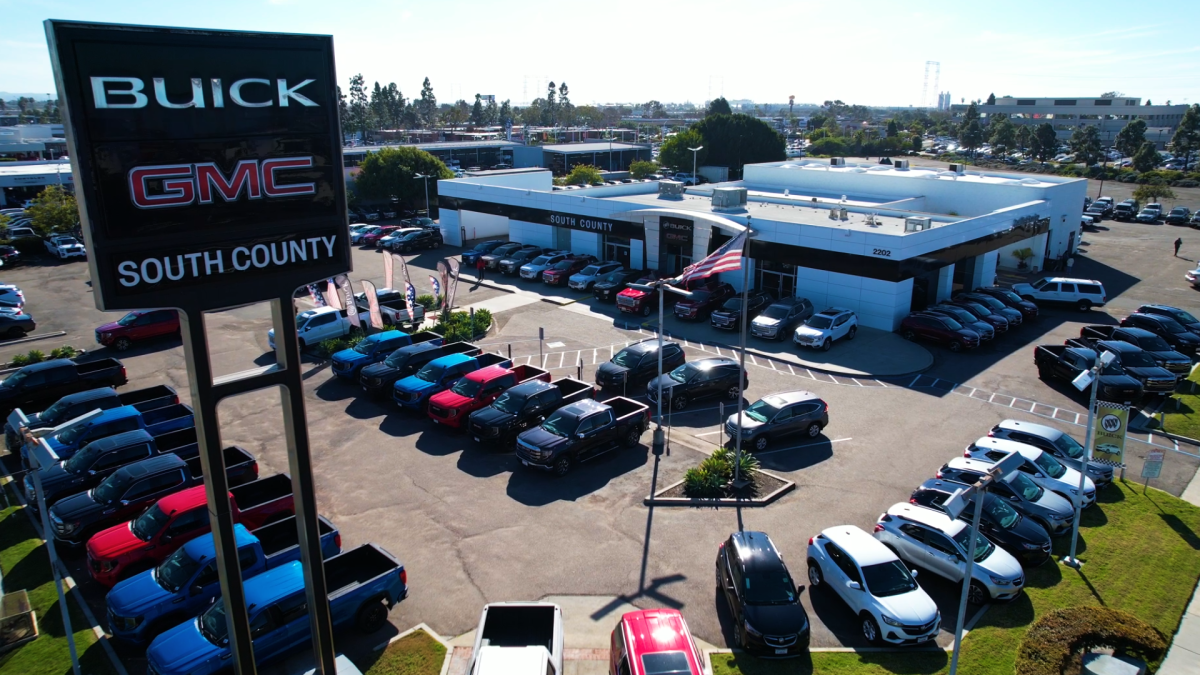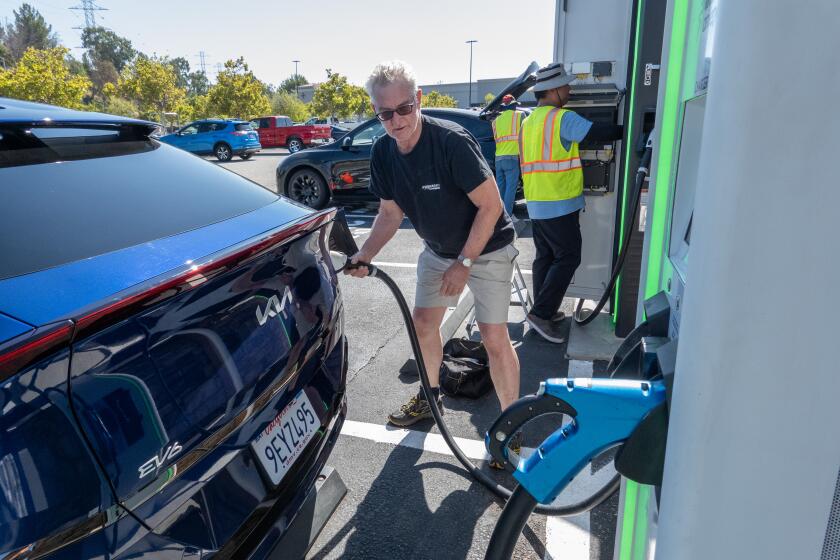GM and Toyota defy headwinds with big gains in new car sales

- Share via
General Motors Co. and Toyota Motor Corp. posted double-digit gains in U.S. new car sales for the just-ended quarter even as Stellantis sales fell short, evidence that car buyer appetite for vehicles mostly remains hearty heading into the final months of the year.
Most industry officials expect that momentum to carry over through year’s end because of pent-up demand despite headwinds such as the strike at some Detroit automaker plants and higher financing costs. But a prolonged and expanded labor action would erode gains in vehicle availability and further interest rate hikes may put new cars out of reach of some buyers.
Overall, September was a strong month, with a consensus of five analysts pegging the seasonally adjusted annualized rate of sales at more than 15.4 million vehicles, up from 13.6 million a year ago. Higher production volumes and a better selection of inventory on dealer lots brought out buyers who’ve been holding off on new vehicle purchases.
As autos writer for the L.A. Times, Russ Mitchell gets a lot of questions about electric car buying. Here’s his guide to choosing the right EV for you.
GM’s sales rose 21% in the third quarter to 674,336 vehicles, pushing up its total deliveries this year by 19%. The Detroit automaker’s biggest, most profitable models sold briskly, with deliveries of its GMC Sierra pickup rising 46% and Chevrolet Silverado up 22%. The Chevy Traverse and Buick Enclave SUVs posted gains of 27% and 33%, respectively.
Stellantis, owner of the Jeep and Ram brands, bucked the positive third-quarter sales trends with a 1% drop in overall deliveries from the same period last year. Its prized Jeep SUV brand suffered a 4% decline, its ninth quarterly drop, while the Ram truck brand saw deliveries slip 4%. Sales of every Jeep model except the Grand Cherokee and Grand Wagoneer were down.
The only brand that posted a gain was Chrysler, led by the Pacifica minivan, which more than doubled sales to 38,353. The popularity of the hybrid version of the minivan, which is currently eligible for a $7,500 consumer tax credit under the Inflation Reduction Act, was a bright spot.
GM’s vigorous sales may be short-lived as sales of models made in factories targeted by a United Auto Workers strike are already starting to drop. Union members shut down a plant in Lansing, Mich., that makes the Traverse and Enclave on Sept. 29 and also walked out of a Missouri plant that builds GM’s Chevy Colorado and GMC Canyon on Sept 15. Sales of those two midsize pickups fell at least 10% in the quarter.
Availability of GM’s newest electric vehicle has been hampered by another problem — a slow ramp-up in output. The automaker delivered a little more than 3,000 Cadillac Lyriq sedans and close to 1,200 Hummer pickups in the quarter, but only 18 all-electric Silverado trucks and 19 Chevy Blazer EVs.
Toyota also had an impressive tally — and expects those gains to persist. The Japanese carmaker’s sales in the three-month period climbed 12% to 590,296, powered by a 14% gain in September. Deliveries of its top-selling RAV4 compact SUV and Corolla compact sedan were among the biggest contributors. Electrified vehicles — led by a hybrid gas-electric version of the RAV4 — made up 31% of sales last month, the company said.
“We’re still very, very short in our supply,” Jack Hollis, Toyota’s U.S. sales chief, said in a recent interview. “The industry is still pretty darn strong,” he said, predicting a seasonally adjusted annual rate above 16 million vehicles into 2024.
Honda Motor Co., Nissan Motor Co. and Hyundai Motor Co. also posted strong gains for the quarter that ended last month.
Ford CEO Jim Farley says the Ford F-150 Lightning, the world’s first all-electric mass-market pickup truck, represents ‘the tip of the spear’ in Ford’s EV strategy.
One threat that may stifle demand is an unrelenting surge in monthly payments. Those averaged a record $736 for new cars in the third quarter as financing rates hit 7.4% — the highest since the second quarter of 2007, according to auto data researcher Edmunds.com.
But there’s still plenty of pent-up demand after pandemic-era supply chain snarls choked off vehicle inventory, Randy Parker, chief executive of Hyundai’s U.S. sales unit, said on a call with reporters Tuesday. He expects Hyundai to post bigger sales in the fourth quarter as inventory rebounds after it retooled plants in the third quarter.
“The rebound continues,” Parker said. “The only thing keeping things in check right now is the interest rate, because it’s making it a lot more difficult for consumers to purchase a vehicle.”
Hyundai’s sales grew 9% in the third quarter to 200,534 vehicles — with a 16% jump in September alone — on demand for the brand’s Kona and Tucson compact SUVs. Much of the monthly gain came from traditionally lower-margin fleet sales as retail deliveries rose only 2% in September. Kia brand sales rose to 210,341 vehicles in the quarter and were up 20% in September as buyers snapped up Forte compact sedans and Telluride midsize SUVs.
With average U.S. gas prices still hovering well above $3.50 a gallon, Hyundai has seen “huge demand” for hybrid vehicles, such as the hybrid Santa Fe and Tucson SUV, Parker said. Fully electric and hybrid vehicles made up 8% of Hyundai’s total sales in September.
The Korean automaker is offering free charging for two years through Electrify America and $600 toward installation of an EV charger to boost sales of its electric Ioniq 5 and new Ioniq 6. Sales of the Ioniq 5 more than doubled to 11,665 vehicles in the third quarter, while Hyundai sold about 5,000 of its Ioniq 6 model, which hit the market this spring.
Honda’s third-quarter deliveries soared 53% to 339,143 vehicles, led by its top-selling CR-V compact SUV and Civic compact sedan. Nissan said its sales surged 41% in the third quarter to 216,878, with its Rogue compact SUV and Sentra compact sedan at the head of the pack.
Ford Motor Co. plans to release its numbers for the latest month and quarter on Wednesday.
More to Read
Inside the business of entertainment
The Wide Shot brings you news, analysis and insights on everything from streaming wars to production — and what it all means for the future.
You may occasionally receive promotional content from the Los Angeles Times.












